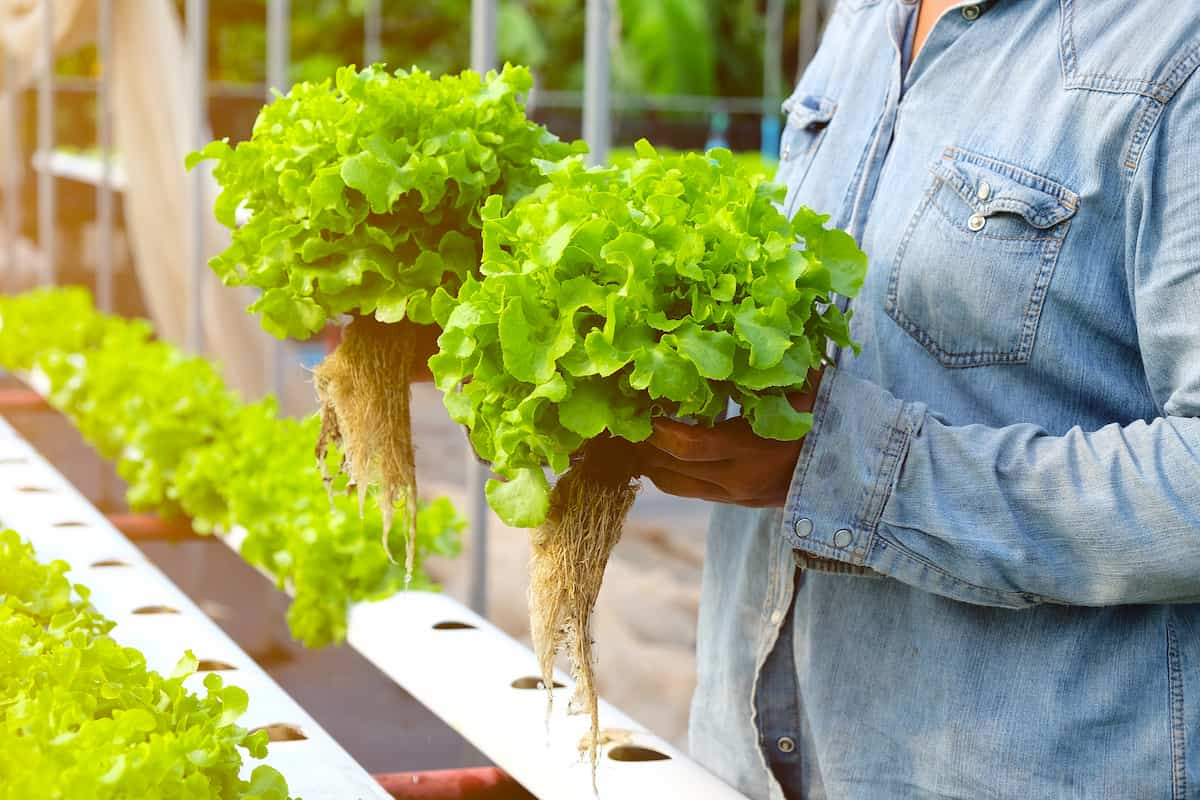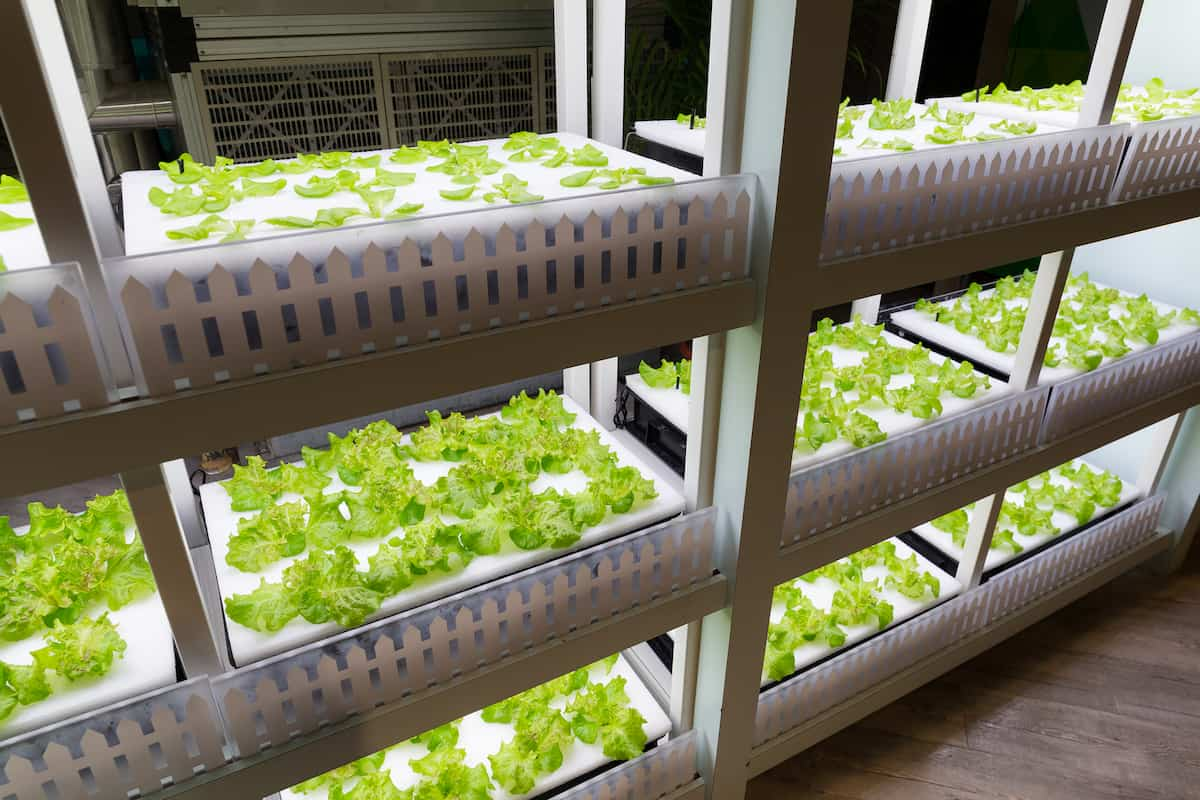Organic hydroponic gardening is a revolutionary way to grow vegetables without soil, using nutrient-rich water solutions to deliver essential nutrients directly to the roots of the plants. This method allows gardeners to control the growing environment precisely, resulting in higher yields, faster growth, and fewer pests and diseases. Below we learn about creating an organic hydroponic vegetable garden from scratch, covering everything from selecting the right system and growing medium to planting, maintaining, and harvesting your vegetables.

Guide to Start an Organic Hydroponic Vegetable Garden
Understanding Hydroponics
Hydroponics is a soilless gardening method that relies on nutrient-rich water to give plants the essential elements they need to grow. By eliminating the need for soil, hydroponic systems offer several advantages over traditional gardening, such as reduced water usage, fewer pests and diseases, and the ability to grow plants in smaller spaces. Several types of hydroponic systems exist, including nutrient film technique (NFT), aeroponics, deep water culture (DWC), and ebb and flow. Each system has advantages and disadvantages, so it’s essential to research and choose the one that best fits your needs.
Choosing the Right Hydroponic System
When selecting a hydroponic system, consider available space, budget, desired yield, and experience level. For beginners, DWC and ebb and flow systems are excellent choices due to their simplicity and ease of maintenance. DWC systems suspend plant roots in a nutrient-rich water solution, while ebb and flow systems flood and drain the growing medium with a nutrient solution. More advanced gardeners may prefer NFT or aeroponic systems, which require higher expertise but can produce more substantial yields.
Selecting a Growing Medium
In a hydroponic system, plants are grown in a soilless medium that provides support and retains moisture. Some popular organic growing mediums include coconut coir, perlite, and vermiculite. Coconut coir, derived from coconut husks, is water-retentive and renewable. Perlite, derived from volcanic rock, is lightweight and porous, promoting root aeration. Vermiculite, a natural mineral, has high water retention and helps maintain a stable pH.
Preparing Your Grow Space
Before setting up your hydroponic system, prepare the grow space by ensuring it is clean, well-ventilated, and has access to electricity and water. Choose a location that can accommodate your chosen hydroponic system and has enough room for your plants to grow. Ensure the area is protected from extreme temperatures and has proper lighting from natural sunlight or supplemental grow lights.
Assembling Your Hydroponic System
Follow the manufacturer’s instructions to assemble your chosen hydroponic system. Ensure all connections are secure and the system is stable and level. Fill the system with water, and adjust the pH to the optimal range for your chosen plants, typically between 5.5 and 6.5. To create an organic nutrient solution, use an organic hydroponic fertilizer, and follow the manufacturer’s instructions for mixing and application rates.
Choosing and Planting Your Vegetables
Select vegetables well-suited for hydroponic growth, such as leafy greens, tomatoes, peppers, and cucumbers. Purchase organic, disease-resistant seedlings or seeds from a reputable supplier. To plant seedlings, gently remove them from their pots, rinse the roots to remove any soil, and place them in the growing medium.
For seeds, place them directly in the growing medium, following the recommended planting depth and spacing for each variety. Carefully monitor the moisture levels in the growing medium during germination to prevent the seeds from drying out or becoming waterlogged.
In case you missed it: Hydroponic Amaranthus Farming in a Greenhouse: Key Rules to Start from Scratch

Lighting and Temperature Control
Proper lighting is essential for optimal plant growth in a hydroponic system. If you don’t have access to natural sunlight, invest in grow lights that provide a full spectrum of light. LED lights are energy-efficient and produce less heat, making them ideal for indoor hydroponic gardens. Maintain a consistent light schedule, providing most vegetables with 15 to 19 hours of light per day.
Temperature control is crucial for healthy plant growth. Maintain temperatures between 65 and 75 degrees Fahrenheit for most vegetables, with a 10-degree drop at night. Monitor the temperature in your grow space using a thermometer, and use heaters or air conditioners to maintain the ideal temperature range.
Nutrient and pH Management
Regularly check and maintain the nutrient solution in your hydroponic system. Replace the solution every two to three weeks or as the manufacturer recommends. Monitor the pH level of the solution and adjust as needed, maintaining a range between 5.5 and 6.5 for most vegetables. Use organic pH adjusters, such as lemon juice or vinegar, to lower pH and baking soda to raise pH.
Pest and Disease Management
Organic hydroponic gardens have fewer pests and diseases compared to soil-based gardens. However, monitoring your plants for any signs of infestation or infection is essential. Use organic pest control methods, such as introducing beneficial insects, using insecticidal soap, or employing physical barriers. For diseases, ensure proper air circulation, maintain optimal nutrient levels, and remove any infected plant material.
Pruning and Training
Pruning and training your plants can help maximize yields and maintain healthy growth. Regularly remove dead or yellowing leaves, and pinch off suckers on tomato plants to encourage more robust fruit production. For vining plants like cucumbers, use a trellis or support structure to train the plants vertically, saving space and improving air circulation.
Monitoring Plant Growth
Regularly observe your plants’ growth and development to ensure they receive adequate nutrients, light, and air circulation. Measure the plants’ growth rate and compare it to the expected growth for each variety. This monitoring will help you adjust the nutrient solution, lighting, or environmental conditions to optimize plant health and productivity.
Harvesting Your Vegetables
Harvest your vegetables at their peak ripeness for optimal flavor and nutrition. Leafy greens can be harvested by removing the outer leaves, allowing the plant to grow. Tomatoes, peppers, and cucumbers should be harvested when they reach their mature size and color. Use clean, sharp tools to harvest your vegetables, and handle them gently to prevent bruising or damage.
In case you missed it: Hydroponic Rosemary Farming in a Greenhouse: Key Rules to Start from Scratch

Conclusion
Organic hydroponic vegetable gardening offers an innovative and sustainable way to grow fresh, healthy produce in a controlled environment. By following this guide, you’ll be well on your way to creating a thriving hydroponic garden from scratch, yielding delicious vegetables from planting to harvest. With proper planning, maintenance, and care, your organic hydroponic garden can provide abundant, nutritious produce for years.
- Ultimate Guide to Ossabaw Island Hog: Breeding, Raising, Diet, and Care
- Ultimate Guide to Juliana Pig: Raising Facts, Size, Diet, Care, and Lifespan
- Raising Lleyn Sheep: Disadvantages, Price, Uses, Characteristics, and Care
- Ultimate Guide to Meishan Pig: Breed Facts, Breeding, Raising, and Care
- Ultimate Guide to Teacup Pigs: Raising, Diet, Lifespan, Cost, and Care
- Guide to Raising Poll Dorset Sheep: Facts, Profile, Characteristics, Uses, and Care
- Ultimate Guide to Bighorn Sheep: Characteristics, Diet, Lifespan, Breeding, and Lifecycle
- Ultimate Guide to Raising Katahdin Sheep: Farming Facts, Breed Profile, Uses, and Care
- Ultimate Guide to Raising Oreo Cows: Belted Galloways Farming Facts, Profile, Uses, and Care